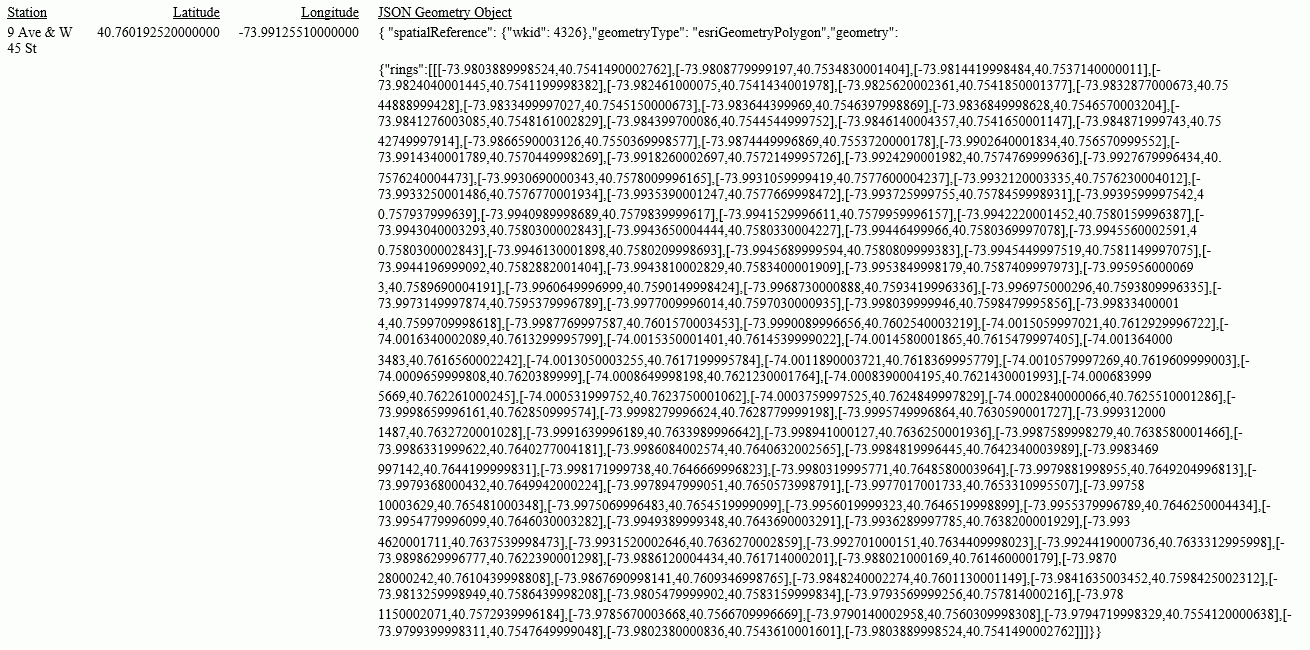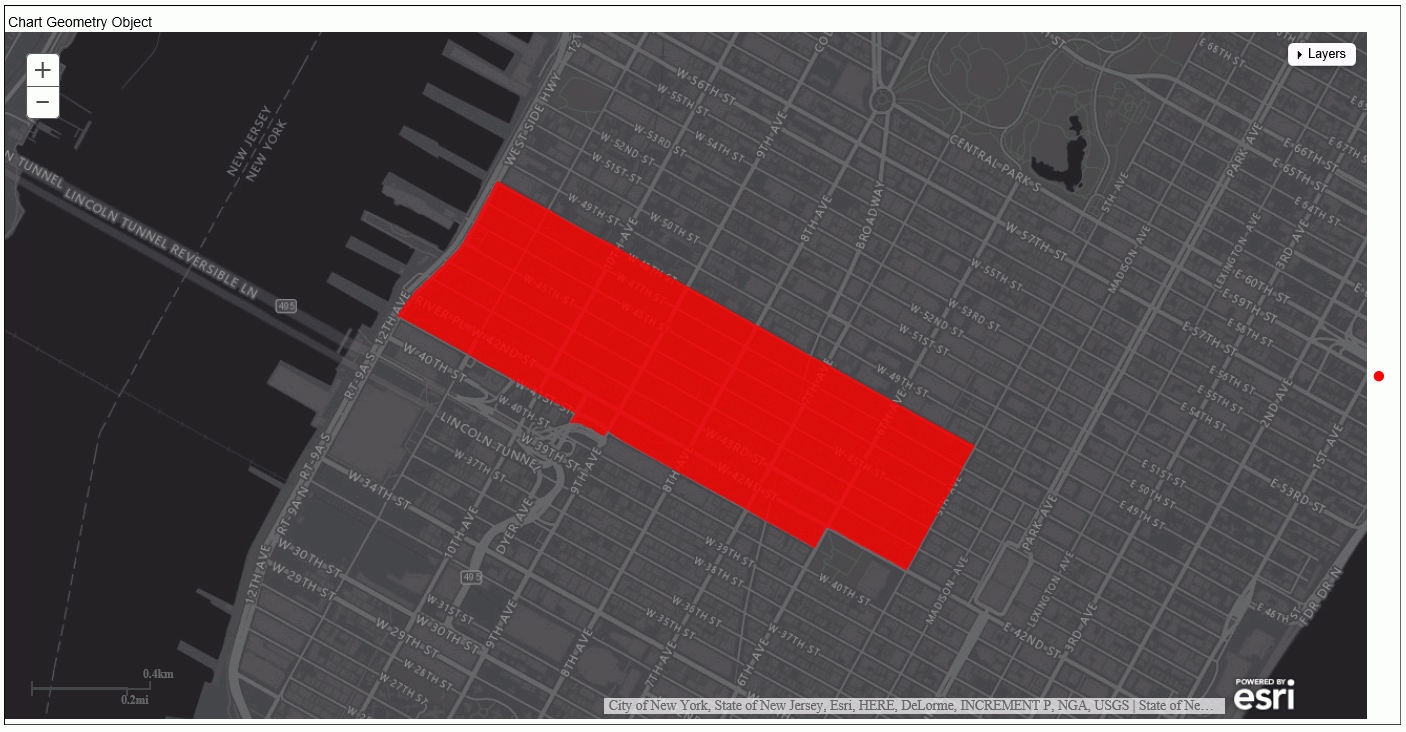Syntax: How to Build a JSON Geometry Object
GIS_GEOMETRY(geotype, wkid, geometry)
where:
- geotype
-
Alphanumeric
Is a geometry type, for example, 'esriGeometryPolygon' ,esriGeometryPolyline, 'esriGeometryMultipoint', 'EsriGeometryPoint', 'EsriGeometryExtent'..
- wkid
-
Alphanumeric
Is a valid spatial reference ID. WKID is an abbreviation for Well-Known ID, which identifies a projected or geographic coordinate system.
- geometry
-
TX
A geometry in JSON.
The output is returned as TX.
Example: Building a JSON Geometry Object
The following request builds a polygon geometry of the area encompassing ZIP code 10036 in Manhattan. The input geometry object is stored in a text (.ftm) file that is cross-referenced in the esri-citibike Master File. The field containing the geometry object is GEOMETRY.
DEFINE FILE esri/esri-citibike
WKID/A10 = '4326';
MASTER_GEOMETRY/TX256 (GEOGRAPHIC_ROLE=GEOMETRY_AREA) =
GIS_GEOMETRY( 'esriGeometryPolygon', WKID , GEOMETRY );
END
TABLE FILE esri/esri-citibike
PRINT
START_STATION_NAME AS Station
START_STATION_LATITUDE AS Latitude
START_STATION_LONGITUDE AS Longitude
MASTER_GEOMETRY AS 'JSON Geometry Object'
WHERE START_STATION_ID EQ 479
ON TABLE SET PAGE NOLEAD
ON TABLE SET STYLE *
type=report, grid=off, size=10,$
ENDSTYLE
END The output is shown in the following image.

Example: Charting a Geometry Object
The following request uses GIS_GEOMETRY to build a geometry object and chart it on an Esri map.
DEFINE FILE esri-citibike
WKID/A10 = '4326';
MASTER_GEOMETRY/TX256 (GEOGRAPHIC_ROLE=GEOMETRY_AREA) =
GIS_GEOMETRY( 'esriGeometryPolygon', WKID , GEOMETRY );
ENDGRAPH FILE ESRI-CITIBIKE PRINT START_STATION_NAME END_STATION_NAME ON TABLE PCHOLD FORMAT JSCHART ON TABLE SET LOOKGRAPH CHOROPLETH ON TABLE SET EMBEDHEADING ON ON TABLE SET AUTOFIT ON ON TABLE SET STYLE * TYPE=REPORT, TITLETEXT='Map', PAGESIZE=E, CHART-LOOK=com.esri.map, $ TYPE=DATA, COLUMN=N1, /*START_STATION_NAME*/ BUCKET=tooltip, $ TYPE=DATA, COLUMN=N2, /*END_STATION_NAME*/
*GRAPH_JS_FINAL
"legend": {"visible": true},
"extensions" : { "com.esri.map" :
{ "scalebar" :
{
"scalebarUnit": "dual",
"attachTo" : "bottom-left"
},
"baseMapInfo": {
"drawBasemapControl" : false,
"showArcGISBasemaps" : false,
"customBaseMaps" : [
{"ibiBaseLayer" : "dark-gray"}
]
},
"overlayLayers":
[{
"ibiDataLayer": {"map-geometry" : {"map_by_field" : "MASTER_GEOMETRY"}}, "title" : "Chart"}]
},
"introAnimation": "{\"enabled\":false}"
}
*END
ENDSTYLE
HEADING
"Chart Geometry Object"
END The output is shown in the following image.
